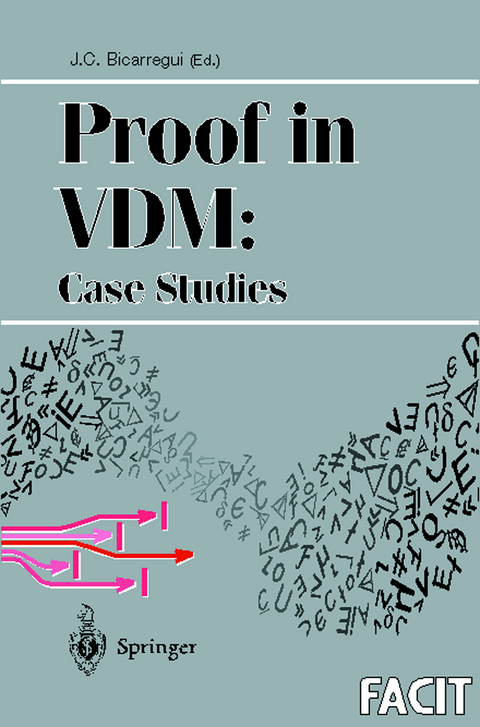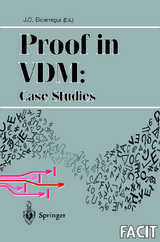Proof in VDM: Case Studies
Springer Berlin (Verlag)
978-3-540-76186-0 (ISBN)
Not so many years ago, it would have been difficult to find more than a handful of examples of the use of formal methods in industry. Today however, the industrial application of formal methods is becoming increasingly common in a variety of application areas, particularly those with a safety, security or financially critical aspects. Furthermore, in situations where a particularly high level of assurance is required, formal proof is broadly accepted as being of value. Perhaps the major benefit of formalisation is that it enables formal symbolic manip ulation of elements of a design and hence can provide developers with a variety of analyses which facilitate the detection of faults. Proof is just one of these possible formal activities, others, such as test case generation and animation, have also been shown to be effective bug finders. Proof can be used for both validation and verifi cation. Validation of a specification can be achieved by proving formal statements conjectured about the required behaviours of the system. Verification of the cor rectness of successive designs can be achieved by proof of a prescribed set of proof obligations generated from the specifications.
1 A Tracking System.- 1.1 Introduction.- 1.2 Context of the Study.- 1.3 A Formal Model of a Tracking System.- 1.4 Analysing the Model with Proof.- 1.5 Issues Raised by the Study.- 1.6 Conclusions.- 1.7 Bibliography.- 2 The Ammunition Control System.- 2.1 Introduction.- 2.2 The Specification.- 2.3 Satisfiability of ADD-OBJECT.- 2.4 Modifying the Specification.- 2.5 Discussion.- 2.6 Bibliography.- 2.7 Auxiliary Results.- 3 Specification and Validation of a Network Security Policy Model.- 3.1 Introduction.- 3.2 The Data Model.- 3.3 The System State.- 3.4 Operations Modelling the SEFs.- 3.5 The Proofs.- 3.6 Conclusions.- 3.7 Bibliography.- 4 The Specification and Proof of an EXPRESS to SQL "Compiler".- 4.1 STEP and EXPRESS.- 4.2 An Outline of EXPRESS.- 4.3 The Abstract EXPRESS Database.- 4.4 A Relational Database.- 4.5 A Concrete EXPRESS Database.- 4.6 A Refinement Proof.- 4.7 General Experiences and Conclusions.- 4.8 Bibliography.- 5 Shared Memory Synchronization.- 5.1 Introduction.- 5.2 Formal Definitions.- 5.3 The VDM Specification of the Definitions.- 5.4 A Theory for Shared Memory Synchronization.- 5.5 Discussion.- 5.6 Related Work.- 5.7 Appendix A. A Formal Theory for Relations.- 5.8 Appendix B. Some Rules Used in the Proof.- 5.9 Bibliography.- 6 On the Verification of VDM Specification and Refinement with PVS.- 6.1 Introduction.- 6.2 The PVS System.- 6.3 From VDM-SL to the Higher Order Logic of PVS.- 6.4 A Specification Example: MSMIE.- 6.5 Representing Refinement.- 6.6 Discussion.- 6.7 Conclusion.- 6.8 Bibliography.- 7 Supporting Proof in VDM-SL using Isabelle.- 7.1 Introduction.- 7.2 Overview of Approach.- 7.3 Syntax.- 7.4 Proof System of VDM-LPF.- 7.5 Proof Tactics.- 7.6 Transformations.- 7.7 Generating Axioms: An Example.- 7.8 Future Work.- 7.9 Conclusion.-7.10 Bibliography.- 7.11 VDM-SL Syntax in Isabelle.
| Erscheint lt. Verlag | 2.3.1998 |
|---|---|
| Reihe/Serie | Formal Approaches to Computing and Information Technology (FACIT) |
| Zusatzinfo | XV, 226 p. |
| Verlagsort | London |
| Sprache | englisch |
| Maße | 155 x 235 mm |
| Gewicht | 372 g |
| Themenwelt | Mathematik / Informatik ► Informatik ► Software Entwicklung |
| Informatik ► Theorie / Studium ► Compilerbau | |
| Schlagworte | Compiler • Computerprogramm • Development • Erfüllbarkeitsproblem der Aussagenlogik • formal methods • formal specification • HC/Informatik, EDV/Informatik • Isabelle • Logic • Modeling • Proof theory • Rack • SQL • theorem proving • Validation • verification • Vienna Development Method (VDM) |
| ISBN-10 | 3-540-76186-1 / 3540761861 |
| ISBN-13 | 978-3-540-76186-0 / 9783540761860 |
| Zustand | Neuware |
| Haben Sie eine Frage zum Produkt? |
aus dem Bereich




